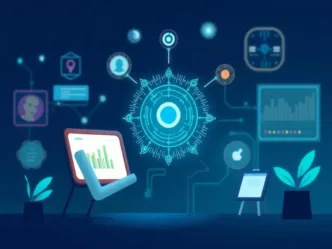Strategic IT Planning is the process of aligning an organization’s information technology (IT) capabilities with its long-term business goals to drive innovation, efficiency, and competitive advantage.
Deeply explain: What is strategic it planning?
It involves defining how technology will support the organization’s vision, prioritize investments, and manage risks while ensuring scalability and adaptability in a rapidly changing digital landscape.
Key Components of Strategic IT Planning
- Alignment with Business Objectives
- Ensures IT initiatives directly support organizational goals (e.g., growth, customer experience, operational efficiency).
- Example: A retail company investing in e-commerce platforms to expand online sales.
- Technology Roadmap
- Outlines timelines for adopting, upgrading, or retiring IT systems (e.g., cloud migration, AI integration).
- Example: A hospital planning a 5-year shift to electronic health records (EHR) systems.
- Resource Allocation
- Prioritizes budgets, talent, and tools for high-impact projects.
- Example: Allocating funds to cybersecurity over legacy system upgrades.
- Risk Management
- Identifies and mitigates IT risks (e.g., cyberattacks, data breaches, compliance gaps).
- Example: Implementing multi-factor authentication and regular security audits.
- Governance & Compliance
- Establishes policies for data privacy, regulatory adherence, and ethical tech use.
- Example: Ensuring GDPR compliance for a global SaaS company.
- Stakeholder Collaboration
- Engages leaders across departments (finance, HR, operations) to ensure IT meets cross-functional needs.
Benefits of Strategic IT Planning
- Competitive Edge: Leverages technology to innovate faster than rivals (e.g., AI-driven customer insights).
- Cost Efficiency: Avoids redundant systems and aligns spending with high-value projects.
- Scalability: Prepares IT infrastructure to support growth (e.g., cloud elasticity).
- Resilience: Builds systems capable of adapting to disruptions (e.g., remote work tools post-pandemic).
- Customer-Centricity: Uses IT to enhance user experiences (e.g., mobile apps, personalized marketing).
Steps in Strategic IT Planning
- Assess Current State: Audit existing IT infrastructure, strengths, and gaps.
- Define Business Goals: Partner with leadership to clarify organizational priorities.
- Identify IT Opportunities: Explore technologies that align with goals (e.g., automation, IoT).
- Develop Roadmap: Create timelines, budgets, and milestones.
- Implement & Monitor: Execute initiatives and track progress with KPIs (e.g., system uptime, ROI).
- Review & Adapt: Continuously refine the plan based on feedback and market changes.
Examples of Strategic IT Planning
- Netflix: Shifted from DVD rentals to cloud-based streaming, using data analytics to drive content creation.
- Walmart: Invested in blockchain for supply chain transparency and AI for inventory management.
- Banking Sector: Adoption of fintech solutions (e.g., mobile banking apps, AI fraud detection).
Challenges
- Rapid Technological Change: Keeping pace with innovations like generative AI or quantum computing.
- Legacy Systems: Overcoming outdated infrastructure that limits agility.
- Cybersecurity Threats: Protecting assets in an era of sophisticated attacks.
- Stakeholder Buy-In: Convincing leadership to prioritize long-term IT investments over short-term gains.
Strategic IT Planning Frameworks
- COBIT: Focuses on governance and risk management.
- ITIL: Standardizes IT service management processes.
- Balanced Scorecard: Links IT metrics to business outcomes.
Why It Matters
In today’s digital-first world, technology is a core driver of business success. Strategic IT planning ensures organizations:
- Avoid reactive “tech for tech’s sake” decisions.
- Foster innovation while managing risks.
- Stay agile in the face of disruption (e.g., AI, remote work, sustainability demands).
By integrating IT strategy with corporate vision, leaders can turn technology into a transformative force rather than a cost center.






